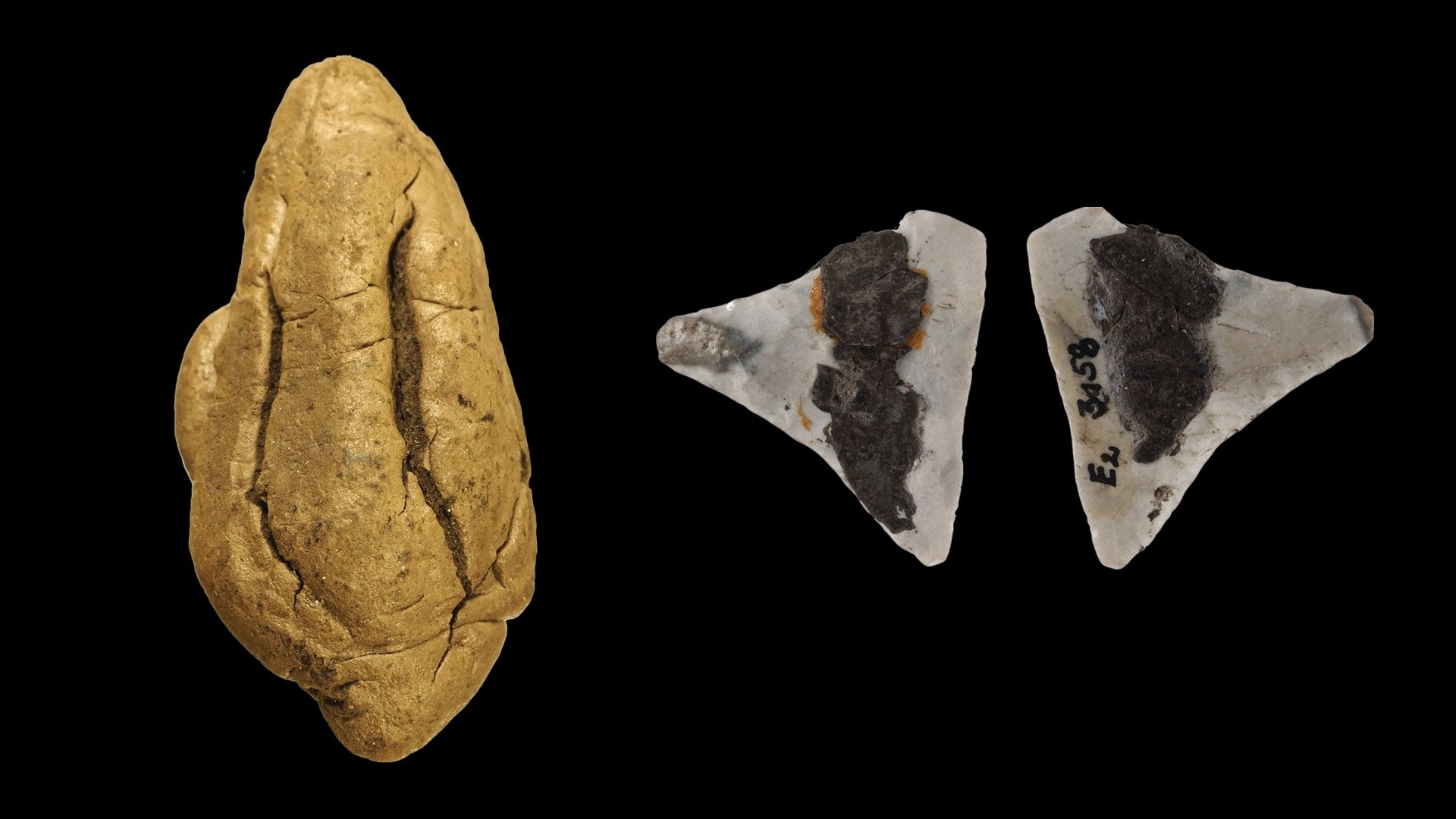Science
Ancient Chewing Gum Sheds Light on Gender Roles in Neolithic Europe

A recent study by researchers from the University of Copenhagen has uncovered significant insights into gender roles during the Neolithic Age in Europe. The team analyzed discarded birch tar wads, which were likely used as a form of “chewing gum” by communities over 6,000 years ago. This research offers a rare glimpse into the daily lives and societal structures of ancient peoples.
The birch tar, known as the world’s oldest synthetic material, was utilized by Neolithic communities in the European Alps. While the exact purpose of chewing tar is still uncertain, it is believed to have served medicinal purposes due to its natural antimicrobial properties. According to the archaeological team, led by Anna White, “The precise reason for chewing tar remains unclear, but it has been suggested that it was chewed for medicinal purposes.”
Methodology and Findings
The research team examined a total of 30 birch tar artifacts from nine sites across the Alps, primarily retrieved from ancient lake settlements. Among these artifacts, twelve were identified as loose wads, showing distinct signs of chewing. This process of chewing preserved elements such as saliva, food particles, and DNA within the tar.
By extracting DNA from 19 samples, the researchers were able to analyze the daily tasks performed by different genders. Some tar pieces contained traces of linseed (Linum usitatissimum) and poppy seeds (Papaver somniferum), although it remains unclear whether the latter was consumed as food or for its psychoactive properties. The study revealed that “the presence of human and oral microbial DNA in some of the samples suggests the tar was chewed, in some cases by multiple individuals,” according to the authors.
Gendered Practices Revealed
The DNA analysis yielded fascinating insights into gender roles. Male DNA was found in tar used as an adhesive on ten stone tools, indicating that men were primarily responsible for tool-making. Conversely, female DNA was detected in tar used for three pottery items, suggesting that women were predominantly engaged in pottery production during this period.
The researchers also proposed that Neolithic people may have chewed tar not solely for consumption but to soften it for use in various applications. Chewing reduces the adhesive properties of tar, which can only be restored through reheating. The researchers noted, “[This] may explain why we find less oral microbial DNA in the hafted samples and the ceramic tars than in some of the ‘chewed’ pieces.”
Due to the scarcity of human remains from this era, ancient chewing gum represents a unique opportunity for researchers to gain insights into prehistory that would otherwise be lost. The findings of this study were published in the journal Proceedings of the Royal Society B, marking an important contribution to our understanding of ancient European societies.
-

 Business7 days ago
Business7 days agoIconic Sand Dollar Social Club Listed for $3 Million in Folly Beach
-

 Politics1 week ago
Politics1 week agoAfghan Refugee Detained by ICE After Asylum Hearing in New York
-

 Health1 week ago
Health1 week agoPeptilogics Secures $78 Million to Combat Prosthetic Joint Infections
-

 Science7 days ago
Science7 days agoResearchers Achieve Fastest Genome Sequencing in Under Four Hours
-

 Lifestyle1 week ago
Lifestyle1 week agoJump for Good: San Clemente Pier Fundraiser Allows Legal Leaps
-

 Health1 week ago
Health1 week agoResearcher Uncovers Zika Virus Pathway to Placenta Using Nanotubes
-

 World1 week ago
World1 week agoUS Passport Ranks Drop Out of Top 10 for First Time Ever
-

 Science1 week ago
Science1 week agoMars Observed: Detailed Imaging Reveals Dust Avalanche Dynamics
-

 World1 week ago
World1 week agoRegional Pilots’ Salaries Surge to Six Figures in 2025
-

 Entertainment1 week ago
Entertainment1 week agoJennifer Lopez Addresses A-Rod Split in Candid Interview
-

 Top Stories6 days ago
Top Stories6 days agoChicago Symphony Orchestra Dazzles with Berlioz Under Mäkelä
-

 Business1 week ago
Business1 week agoMcEwen Inc. Secures Tartan Lake Gold Mine Through Acquisition









